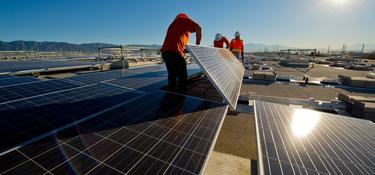
The Upfront Costs of Solar Installation
Having solar installed on your warehouse roof may reduce your monthly energy bills. And solar can provide a great benefit in taking a warehouse into a more sustainable future if planned properly. But what makes people think twice about solar is the upfront cost that’s involved.
Solar projects are multifaceted and require coordination between initial cost, investment resources, the power user and local policy. As such, upfront planning and cost analysis that considers the amount of time the solar installation will deliver energy is critical to ensuring a viable solar project that delivers economic benefits.



